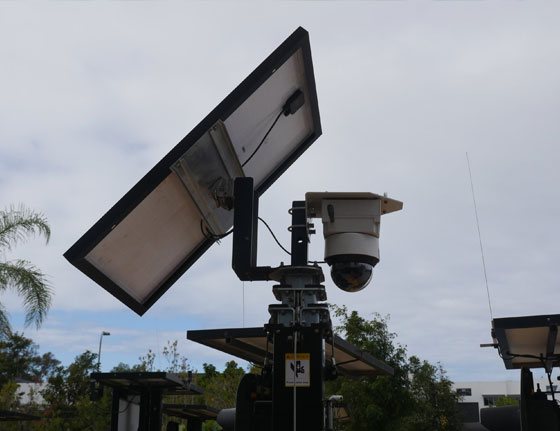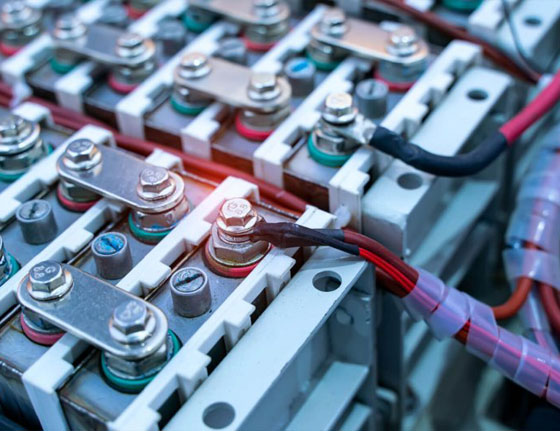Blog
The Future of Energy Storage Why Lifepo4 Batteries Are Leading the Charge
As the demand for renewable energy solutions continues to surge, the significance of efficient energy storage becomes increasingly evident. Among the various energy storage technologies, the Lifepo4 Battery has emerged as a frontrunner due to its superior characteristics and performance. According to a report by MarketsandMarkets, the global lithium-ion battery market is projected to reach USD 129.3 billion by 2027, with Lifepo4 batteries playing a pivotal role in this growth due to their enhanced safety, long cycle life, and thermal stability. Furthermore, the International Energy Agency (IEA) highlights that energy storage capacity is expected to expand significantly, reaching around 2000 GWh by 2040. This anticipated growth solidifies the Lifepo4 battery's position as a key player in the transition towards sustainable energy systems, empowering applications ranging from electric vehicles to renewable energy integration.
The Advantages of Lifepo4 Batteries Over Traditional Battery Technologies
Lifepo4 (Lithium Iron Phosphate) batteries are rapidly becoming the preferred choice in energy storage systems due to their distinct advantages over traditional battery technologies like lead-acid and nickel-cadmium batteries. According to a report by Grand View Research, the global lithium-ion battery market is expected to reach $100 billion by 2025, driven by the rising demand for energy-efficient solutions. Lifepo4 batteries stand out due to their long cycle life, typically exceeding 2000 charge cycles, which is significantly higher than lead-acid batteries that generally last only about 500 cycles. This durability not only reduces the frequency of replacements but also lowers the overall cost in the long term.
Moreover, Lifepo4 batteries offer superior thermal stability and safety. Research from the Journal of Power Sources indicates that Lifepo4 batteries have a higher thermal runaway threshold, making them less prone to overheating and fire hazards. This safety aspect is reinforced by their non-toxic composition, which is an important consideration in the rapidly evolving landscape of environmental regulations. With rising awareness of sustainability, Lifepo4's longer lifespan and reduced ecological impact position it as a more favorable option compared to its traditional counterparts. As industries continue to prioritize cleaner energy solutions, Lifepo4 technology is set to play a pivotal role in shaping the future of energy storage.
How Lifepo4 Technology Supports Renewable Energy Integration
The integration of renewable energy sources, such as solar and wind, has been a game-changer in the pursuit of sustainable energy solutions. However, a significant challenge remains: how to store this energy effectively for use when conditions are less favorable. Lithium iron phosphate (LiFePO4) batteries have emerged as a leading solution due to their unique characteristics, which align perfectly with the needs of renewable energy systems.
LiFePO4 batteries offer excellent thermal stability, a long cycle life, and a higher level of safety compared to other lithium-ion technologies. Their ability to deliver consistent power output makes them ideal for large-scale energy storage systems, effectively bridging the gap between energy generation and consumption. As renewable installations continue to expand, the dependable performance of LiFePO4 batteries ensures that surplus energy can be stored and harnessed during peak demand, thereby enhancing grid stability and reliability.
Moreover, the scalability of LiFePO4 technology allows for flexible energy storage solutions, catering to both residential and commercial applications. This versatility is crucial in facilitating the widespread adoption of renewable energy, as it empowers users to become more self-sufficient. By supporting the integration of renewable energy, LiFePO4 batteries are not just leading the charge in energy storage; they are also paving the way for a cleaner, more sustainable future.
The Future of Energy Storage: LiFePO4 Batteries and Renewable Energy Integration
This chart illustrates the energy storage capacity associated with various renewable energy sources. LiFePO4 batteries are becoming increasingly important in enabling the efficient storage and integration of energy generated from these renewable sources.
The Role of Lifepo4 Batteries in Electric Vehicle Advancements
The role of LiFePO4 (lithium iron phosphate) batteries in electric vehicle advancements cannot be overstated. As the demand for efficient, safe, and longevity-providing power sources intensifies, LiFePO4 batteries emerge as a leading choice within the automotive industry. Their thermal stability significantly reduces the risk of overheating—a critical advantage compared to other lithium-ion chemistries. This safety feature is paramount for electric vehicles, which require reliable energy sources to protect both users and the environment.
Additionally, LiFePO4 batteries offer a longer cycle life, enabling electric vehicles to travel greater distances between charges. This extended longevity translates into lower replacement costs and less frequent battery maintenance, greatly improving the overall user experience. Moreover, the eco-friendly nature of LiFePO4 materials aligns well with the sustainability goals of modern automotive designs. As manufacturers strive to produce greener, more efficient vehicles, the integration of LiFePO4 technology represents a significant stride toward a more sustainable future in transportation.
Cost-Effectiveness and Longevity: Lifepo4 Battery Economic Benefits
Lifepo4 batteries are emerging as a frontrunner in the energy storage sector due to their cost-effectiveness and longevity. According to a recent comparative assessment of energy storage systems, Lifepo4 offers several advantages over traditional lithium-ion batteries, particularly in terms of safety and lifespan. With advancements in technology, the longevity gap between battery electric vehicles (BEVs) and internal combustion engine vehicles has significantly narrowed, making Lifepo4 batteries a reliable choice for sustainable energy solutions.
Moreover, economic evaluations underline the profitability of Lifepo4 batteries in grid-scale storage. A study in Europe revealed that innovative operating optimization strategies for battery storage allocation can enhance techno-economic benefits, ensuring that Lifepo4 batteries are not only viable but also environmentally friendly. As countries strive for carbon neutrality, Lifepo4 batteries present an attractive option for integrating with renewable energy systems, primarily due to their reduced degradation over time.
Tips: When considering energy storage solutions, prioritize technologies that offer long-term cost benefits and sustainability. Regularly review market trends and technological advancements to make informed decisions about energy investments. Adopting efficient recycling practices can also extend the lifecycle and economic viability of battery technologies, mitigating environmental impacts.
The Future of Energy Storage: Why Lifepo4 Batteries Are Leading the Charge - Cost-Effectiveness and Longevity: Lifepo4 Battery Economic Benefits
| Dimension | Lifepo4 Battery | Comparative Technology |
|---|---|---|
| Cost per kWh | $150 | $200 |
| Cycle Life | 2000 cycles | 500 cycles |
| Efficiency | 90% | 80% |
| Depth of Discharge | 80% | 70% |
| Environmental Impact | Low | Moderate |
| Weight | 25 kg | 30 kg |
| Temperature Range | -20°C to 60°C | 0°C to 45°C |
Future Innovations in Lifepo4 Battery Applications and Research Trends
The advancement of LiFePO4 (lithium iron phosphate) batteries has revealed exciting prospects in energy storage applications, primarily due to their safety, longevity, and efficiency. According to a recent report by MarketsandMarkets, the global market for LiFePO4 batteries is projected to reach approximately $9 billion by 2025, growing at a compound annual growth rate (CAGR) of 15.5%. This growth is driven by an increasing demand for renewable energy storage solutions, as LiFePO4 batteries offer superior cycle life and thermal stability compared to other lithium-ion chemistries.
Innovative applications of LiFePO4 batteries are emerging across various sectors. In electric vehicles (EVs), their high-temperature tolerance facilitates longer ranges and more reliable performance, which is critical for consumer adoption. Additionally, research trends indicate a shift towards integrating LiFePO4 batteries into energy management systems for residential and commercial use, enhancing grid stability and energy efficiency. The National Renewable Energy Laboratory (NREL) highlights that the adoption of these batteries in smart grid applications could improve energy distribution resilience by 20% by 2030, making them a cornerstone of future energy solutions.





